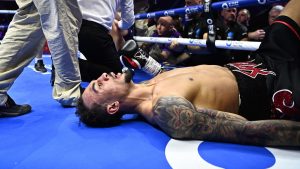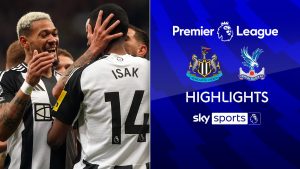Column: Long Beach sets gold standard in race promotion


LONG BEACH, Calif. (AP) — House of Pistachios was a mom-and-pop startup launched in 1984 by a Southern California family trying to hawk homemade nuts, mints, candies, fruits and chews. As the tiny company grew, the family loaded their wares and traveled up and down the West Coast.
One of the first events they hit was the Grand Prix of Long Beach. The annual four-day downtown festival features IndyCar and other series racing through the streets as fans ramble through the convention center eyeing classic cars, booths of racing memorabilia, and, of course, chocolate peanuts and tequila-flavored pistachios.
House of Pistachios has grown so big that the bulk of its business is now done through exporting. But when Viraj Sehgal and his brother took over for their parents, they kept coming back to the same booth in the same high-trafficked area at the Grand Prix, just steps from where onlookers crowd to watch Robby Gordon’s popular Stadium Super Series prepare to race.
“The profit margin from coming here is next to nothing,” Sehgal told The Associated Press. “But my family has been coming here for 22 years, so we come for our customers and to carry on the tradition. There’s just something about the Grand Prix of Long Beach that makes us come back year after year.”
That way of thinking has turned the event, now in its 45th year, into the second-most prestigious race on the IndyCar calendar, behind only the Indianapolis 500. Alexander Rossi became just the eighth driver to win more than once at Long Beach when he demolished the field by more than 20 seconds on Sunday.
Rossi’s performance was flawless, and more than an hour after he took the checkered flag, he used his scooter to weave through the venue past the thousands of party-goers still dancing along to the live music, crowding around televisions to watch the support race that followed the IndyCar event or browsing vendor booths and food trucks.
The days of selling a ticket to watch cars go round and round and tossing in a musical act and some merchandise trailers are gone for any series trying to attract new fans. It just isn’t enough anymore. If promoters want people to come to their events, Long Beach is a case study on the amenities needed to create an event within an event that has maintained its crown jewel status for nearly 50 years.
Long Beach, after all, is the unicorn of motorsport events in that its crowd has grown while events pretty much everywhere else are still trying to stop the slide.
Long Beach organizers say a three-day crowd of 185,000 attended last year’s race, the most since 2000. Attendance totals were not yet available for this past weekend, in which IndyCar, IMSA, Pirelli World Challenge, Historic IMSA GTO, Stadium Super Trucks and Motegi Racing Super Drift Challenge all raced around the 1.968-mile, 11-turn temporary road course.
IndyCar races in front of hundreds of thousands of fans each May at Indianapolis Motor Speedway. Still, Rossi noted that he was aware of the Long Beach crowd during his driver introduction lap around the track and he claimed runner-up Josef Newgarden took a peek into the temporary grandstands during the race itself.
“Who knows if this is true but he said to Scott Dixon and I, ‘I was looking around during the race, and no one left. They must have enjoyed it.’ Good for him,” Rossi said. “I was not spectating on the spectators, but yes, it’s an amazing event.”
Long Beach has established itself on the SoCal entertainment calendar, thanks to 45 years of date equity. A three-day general admission ticket is $95 (plus one free child admission); a guaranteed seat in the grandstands for all three days is $147 for the best rows and a three-day parking pass at the marina costs $50, though the event is walkable. The “celebrities” of the IndyCar Series can be spotted in nearly any restaurant or socializing in hotel lobbies.
“This is a really cool race for my family, my dad moved to L.A. from England in like 1980 or something and this is the first race he ever took my mom to,” said IndyCar driver Spencer Pigot. “My dad has been to, I don’t know, 20 or 30 of these races. It’s cool to have that kind of family tie, that this is a special event for me and my parents.”
It has taken nearly five decades for Long Beach to build this event, which for 40 years hosted a Toyota-sponsored celebrity race that once featured Walter Payton, Mary-Lou Retton, Josh Brolin, Donny Osmond, Jason Bateman, Lorenzo Lamas, Ted Nugent, Bruce Jenner, Gene Hackman and James Brolin.
That event ended after 2016 and Toyota closed the chapter on its 39-year-run as title sponsor last season. Acura, an arm of Toyota-rival Honda, jumped at the opportunity to back an event that basically only needs the lights flipped on. Acura immediately changed all the signage, using heavy blues in its branding to differentiate from 39 years of red Toyota signs.
“There’s some familiarity, I’m sure. It is a racetrack. But over time we would like to amplify, do different things, do new things,” said Jon Ikeda, Acura vice president and brand officer. “We want to take whatever is new that we can bring in and enhance the whole experience.”
That is the approach track operators and its partners need to take at motorsports venues across the country.





